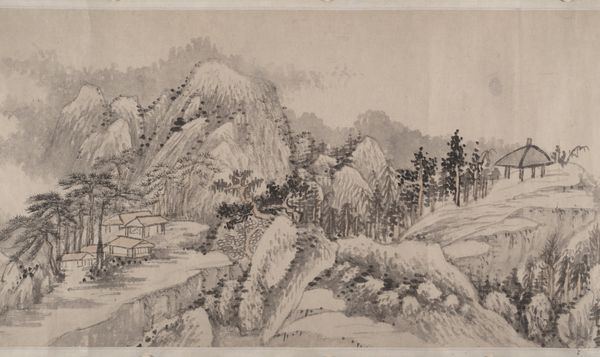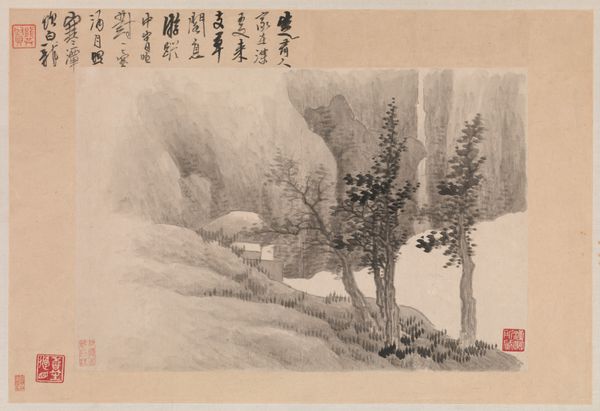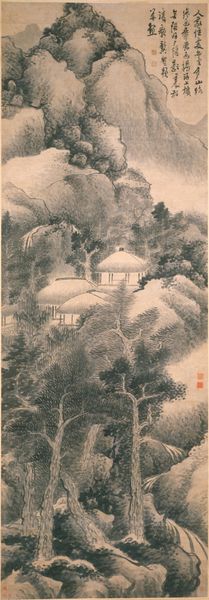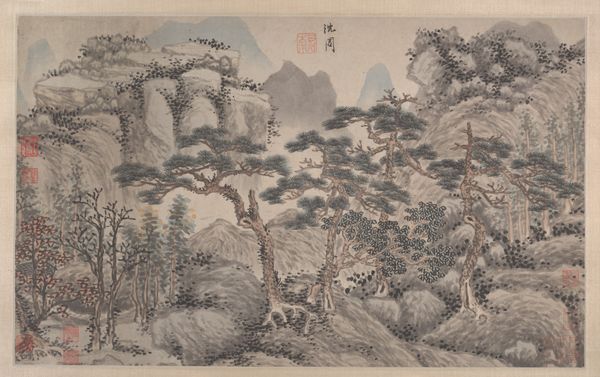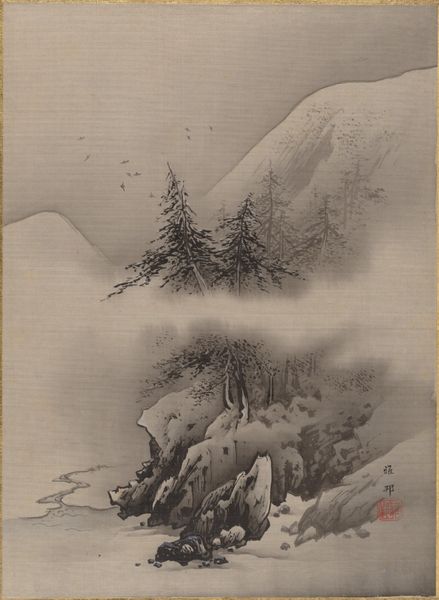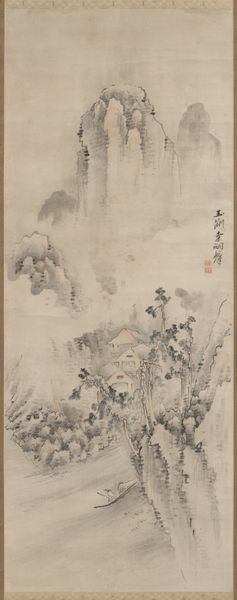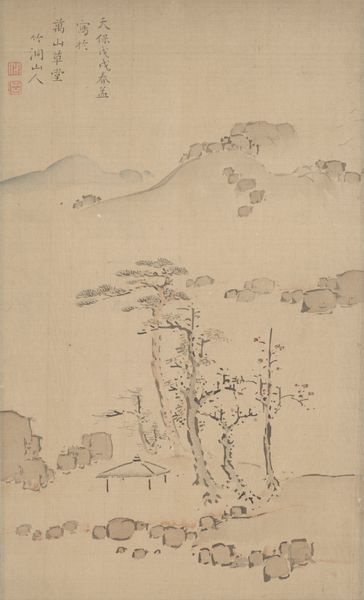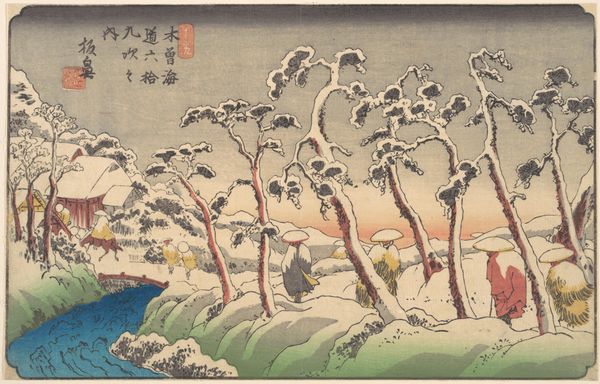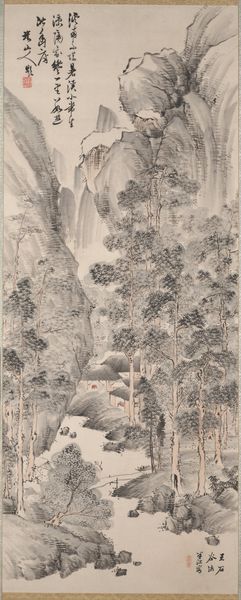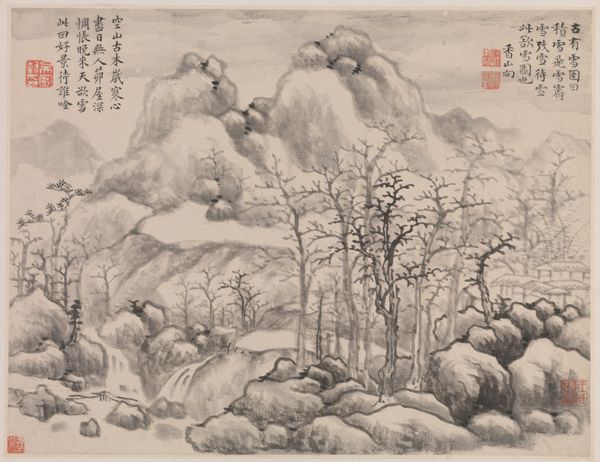
painting, ink
#
painting
#
asian-art
#
landscape
#
ink
Dimensions: Each: 8 3/4 x 17 3/8 in. (22.2 x 44.1 cm)
Copyright: Public Domain
Editor: Gong Xian’s ink painting, "Landscapes," from the 1680s, feels to me like a half-remembered dream. The mist blurs the mountains, making them loom, and those little houses nestling at their feet seem almost fragile. What strikes you when you look at it? Curator: That's beautifully put. A "half-remembered dream" – yes, I feel that too! For me, it’s all about the artist's emotional landscape, rather than a literal depiction. Notice the stark contrasts? How the dark ink seems to claw at the paper? Gong Xian lived through immense upheaval. This isn’t just a pretty landscape; it's the soul of a scholar wrestling with a fallen dynasty. The bold, almost brutal strokes alongside the softer washes speak volumes. Editor: So, the roughness is intentional, a reflection of his life? Curator: Precisely! Think of those jagged rocks, those stunted trees. It's almost defiant. It makes me wonder if the houses huddling together suggest a search for comfort amid the turmoil? What do you make of the emptiness in the upper part of the painting? Editor: It’s…oppressive? Almost like the weight of the world is bearing down. It gives me this vague sense of unease, of something unsaid. Curator: Wonderful! The unsaid is crucial here. Gong Xian is inviting us into a conversation with silence, urging us to fill the void with our own experiences. It is interesting that emptiness can be as important as details when creating a mood in landscape art. Editor: This has really made me rethink landscape paintings! I never realized how much personal feeling could be infused in a landscape scene. Curator: Absolutely! Art, in its best form, reflects a reality transformed by emotions, an echo chamber for the soul, for both the artist, and, indeed, for us as observers, centuries after its making!
Comments
No comments
Be the first to comment and join the conversation on the ultimate creative platform.
